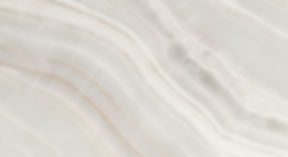
What is acrylic pour?
For those of you who aren’t familiar with the art form of acrylic pouring, here is a brief overview. (Search Youtube for all of these techniques for a better visual)
It is much more involved than simply pouring acrylic paint onto a canvas or other surface. Different pouring mediums are added to the paint to achieve different consistencies and effects; substances that are specifically made for mixing with paint like Liquitex Pouring Medium or Glue or Floetrol. You can mix water as well, depending on what method of pour you are going to do and how thick or thin you need the paint to be. Artists will add silicone oil to create “cells” in the piece as well. After all of the different paints are mix and sit for a few hours so that the bubbles are gone, the artist then chooses which type of paint pour to do. Below is a few techniques that I have tried (I didn’t name them).
Dirty Pour: you layer the different colors of paint into one cup (different effects are achieved depending on the order and how many layers). You then tip the cup over on to the canvas and you can tilt the paint to create different designs on the canvas. This is a good starter technique.
Flip Cup: similar to a dirty pour, you layer the colors of paint into a cup. Many artists will add silicone to the layers for this technique. You then flip the cup quickly over the canvas (a large canvas can take several cups full of paint). The up-side-down cup rests on the canvas until the paint has finished emptying. When you lift the cup, the goal is to let the paint ooze over the canvas, but in a way so as not to distort the cells that are made. This technique is challenging.
Swipe: I love this one! You pour different colors onto a canvas in a desired pattern (often in stripes, but can be anything). Your goal it to cover the canvas except for an area that has been reserved for the “swiping” color (for instance, an area across the top of the canvas). You then carefully pour the swiping color onto this blank area—thickly. You then take a paper towel, or a plastic sheet and swipe the color across all of the other colors. Depending on which colors you put the silicone oil in (swiping color or the others), you will get different looks.
Ring Pour: This is one is tricky! You carefully layer paint into a cup (preferably with a lip on it) and then VERY carefully and slowly pour in the same spot, letting the colors spread out in a ring.
Dutch Pour: One of my favorites! The paint is thinner for this technique and you usually don't use silicone oil. Your pour a base color over all the canvas (usually white or black). Then in one area of the canvas, you place your other colors (usually in a half circle or circle). Then the fun begins! You use a blow drier to blow the colors across the canvas. The trick is to know when to stop.
These are just a few of the pouring techniques I have tried. If you haven't figure out yet, this art form can be very MESSY and gets expensive, because you are using lots of paint, and there is a lot of trial and error, so paint gets tossed. My favorite thing to do is embellish a pour with a painting on top of it to add even more to the painting. Finally, many people seal the painting with varnish. I have not had good success with varnishing--the finish can come out uneven or even bubble up. I have given up on it and let the painting be as it was created. They need to dry for 3 weeks before being completely dry!



